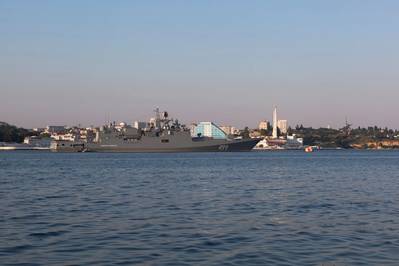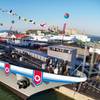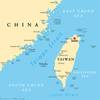Ukraine Invasion: What Can Be Done at Sea?
The closure of the Turkish straits to all warships has drawn attention to the maritime dimension of Russia’s invasion of Ukraine.
From a tactical and operational perspective, Russian naval forces have already contributed, albeit in a limited way, to the current invasion of Ukraine, notably with missile strikes and amphibious assaults. But from a strategic and political perspective, there are other important maritime elements to the conflict, for both Russia and Nato.
Russia is not, and has never been, a maritime power, but it would be a mistake to assume that Russia does not have maritime objectives. Since the late 17th century, securing access to global sea lanes of communication (the primary maritime routes between international ports) has been a recurring driver of Russian foreign policy.
In particular, the country has striven for access to the Turkish straits between the Black Sea to the Mediterranean. This route connects Russia to other global sea lanes and provides the sole access for Russia’s Black Sea Fleet. In the past 15 years, Russia’s annexation of Crimea, securing naval facilities in Syria, and attempts to warm up relationships with Turkey have all contributed to this long-term objective.
According to the 1936 Montreux Convention that regulates control of the straits, Turkey can decide to limit the transit of military vessels in case of war, although ships returning to base are permitted to pass through. The closure of the straits to warships will not make a substantial difference to the war in coming weeks, although it might hinder Russia’s efforts if the conflict continues for months by preventing reinforcements travelling by sea.
However, the political impact of closing the straits is immediately significant. It adds further weight to the various sanctions and acts of diplomatic opposition to Russia’s invasion, such as banning Russian banks from the Swift banking payment system, and closing EU airspace to Russian aircraft, reinforcing Russia’s status as an outcast on the world stage.
Helping Ukraine
There are other maritime actions that western countries can take as part of their efforts to support Ukraine. While they want to avoid an open confrontation with Russia, they are also keen to demonstrate support to allies and to deter Russia from aggression towards eastern European Nato members.
The US and EU could ban Russian ships from docking at their ports (as the UK has already done). And they can enforce sanctions at sea. For instance, on Saturday 26 February, the French authorities seized a cargo ship “suspected of being linked to Russian interests targeted by the sanctions” in the English Channel.
There is a risk that Russia will consider restrictions imposed on Russian assets, such as commercial ships, as a hostile act. This could lead to potential escalation between Nato and EU member states and Russia. But as demonstrated by France’s rapid action, it is possible to implement sanctions so long as risks are measured.
Similarly, Nato is surely going to avoid any naval skirmish that could degenerate into open hostilities. Nato’s priority is to support Ukraine’s defence and enduring independence and sovereignty without risking a war with Russia.
Sealift – the use of ships to deliver assistance and material such as defensive weaponry to Ukraine – is unlikely because of the status of the Turkish straits. Also, there is a large possibility of encountering Russian warships, which are strategically positioned along the access routes to Ukrainian ports, with a risk of an open confrontation.
Third party commercial ships in the Black Sea have already been hit by Russian weapons. What action Nato countries will take if their civilian ships are attacked is a crucial question. Indeed, even if provocations and collateral damages originate from the Russian side, any armed response to them could risk an open war with Russia.
However, naval diplomacy can be part of Nato’s toolkit. Deploying warships, and in particular aircraft carriers, for example in the eastern Mediterranean, would have a substantial symbolic and political effect. This would give a strong message on Nato’s resolve to oppose the invasion to both Russia and eastern European Nato members.
The author
Basil Germond is Senior Lecturer and Director of Research Training, Daculty of Arts and Social Sciences, Lancaster University.
(Source: The Conversation)













